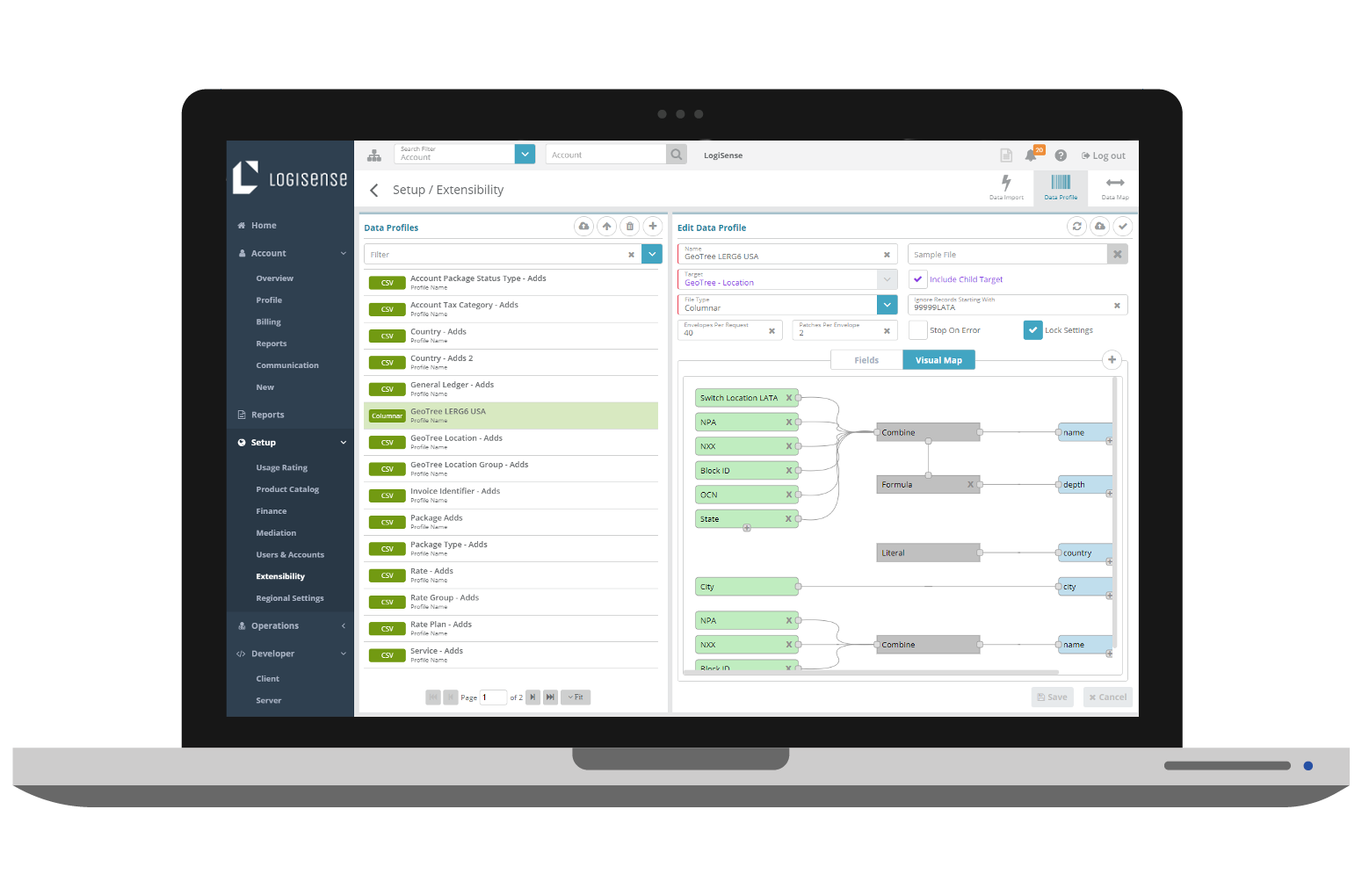Importing & Exporting Data
The LogiSense Billing platform provides powerful capabilities to transform data and schedule import from multiple different file formats such as CSV and columnar. LogiSense's powerful data transformation engine allows you to take file export formats available from your existing back office systems and import the data.
A data import is essentially a mapping of the external data into internal entities. The system provides options for specifying the import file and associated delimiters. If required, transforms can be set up on the input data to convert the data in an acceptable format during the import process. Options are provided for specifying import sizes – i.e. the number of entries that are grouped in a single import transaction with options to stop import when an error occurs. Errors typically occur if there is a validation error on the data being imported.
Visual Designer
A Visual designer is provided to specify the mapping of the external data into internal structures. The external data typically cannot be mapped into the internal structures without undergoing some form of transformation. The system provides various types of transforms such as combining multiple fields, data transformations, making logical decisions or combing formulas. Multiple transforms can be applied to the data; for example, a combine followed by a formula. The transformations are applied in the order in which they are specified.
Data Export
Export of data is permitted via the Invoicing and Reporting Framework. Any core or custom report can be exported as a CSV or PDF output. A customer can leverage this capability to export a report containing accounting and GL related information to an accounting system. Likewise invoice data can be exported for archival purposes or for printing by external systems.
